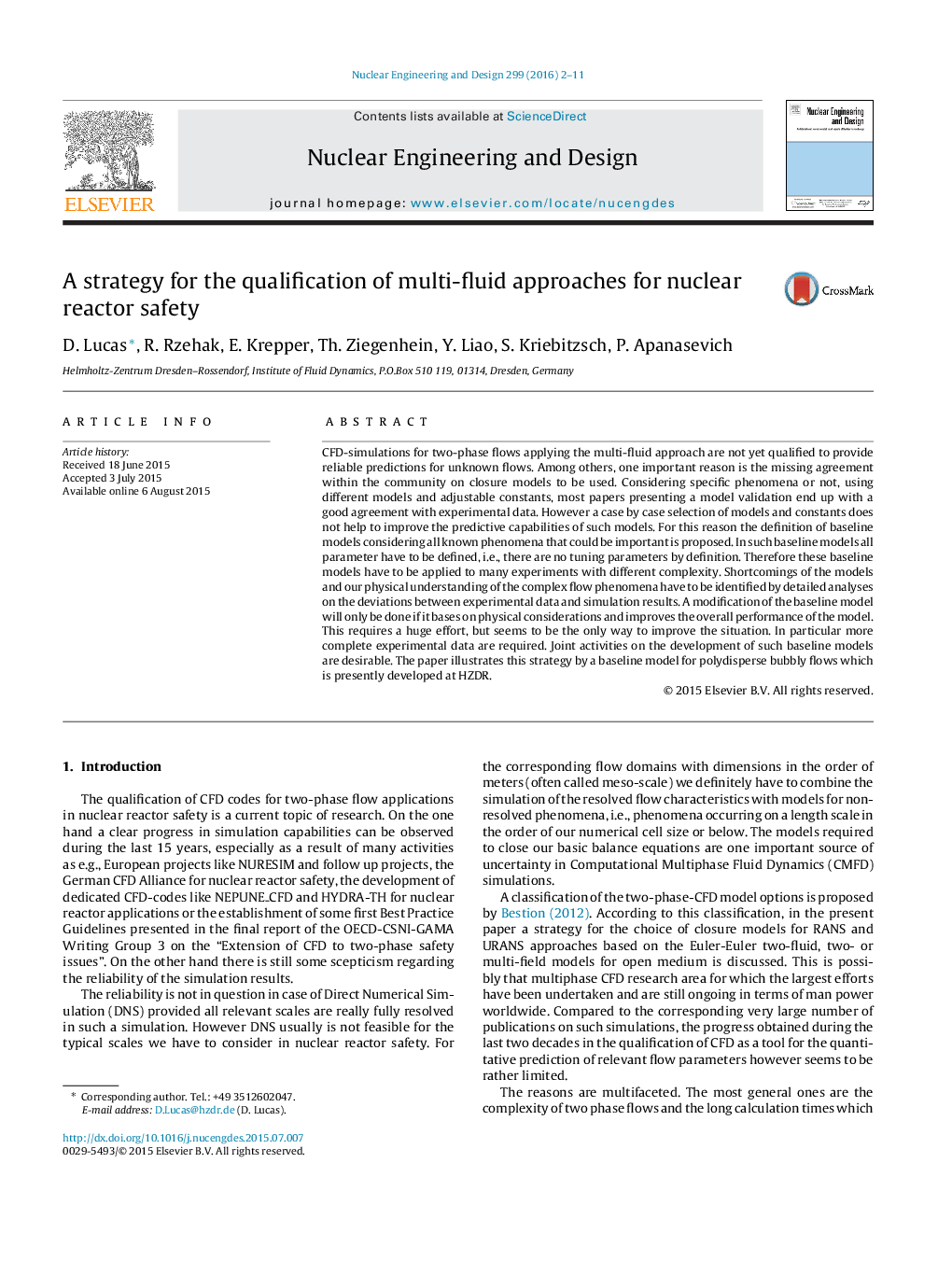| Article ID | Journal | Published Year | Pages | File Type |
|---|---|---|---|---|
| 296005 | Nuclear Engineering and Design | 2016 | 10 Pages |
CFD-simulations for two-phase flows applying the multi-fluid approach are not yet qualified to provide reliable predictions for unknown flows. Among others, one important reason is the missing agreement within the community on closure models to be used. Considering specific phenomena or not, using different models and adjustable constants, most papers presenting a model validation end up with a good agreement with experimental data. However a case by case selection of models and constants does not help to improve the predictive capabilities of such models. For this reason the definition of baseline models considering all known phenomena that could be important is proposed. In such baseline models all parameter have to be defined, i.e., there are no tuning parameters by definition. Therefore these baseline models have to be applied to many experiments with different complexity. Shortcomings of the models and our physical understanding of the complex flow phenomena have to be identified by detailed analyses on the deviations between experimental data and simulation results. A modification of the baseline model will only be done if it bases on physical considerations and improves the overall performance of the model. This requires a huge effort, but seems to be the only way to improve the situation. In particular more complete experimental data are required. Joint activities on the development of such baseline models are desirable. The paper illustrates this strategy by a baseline model for polydisperse bubbly flows which is presently developed at HZDR.
